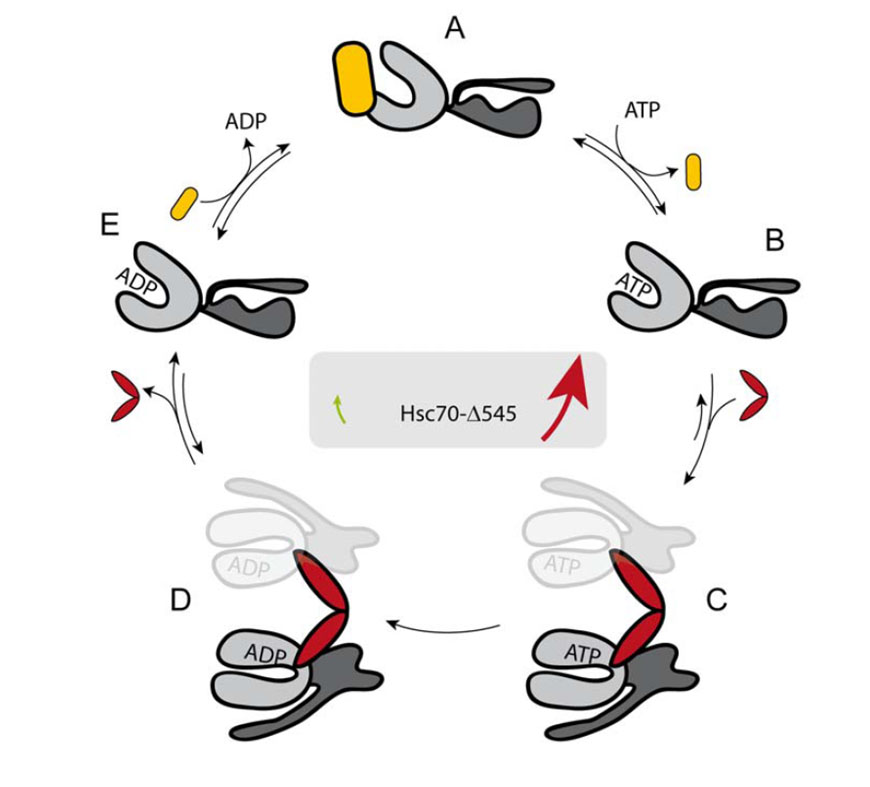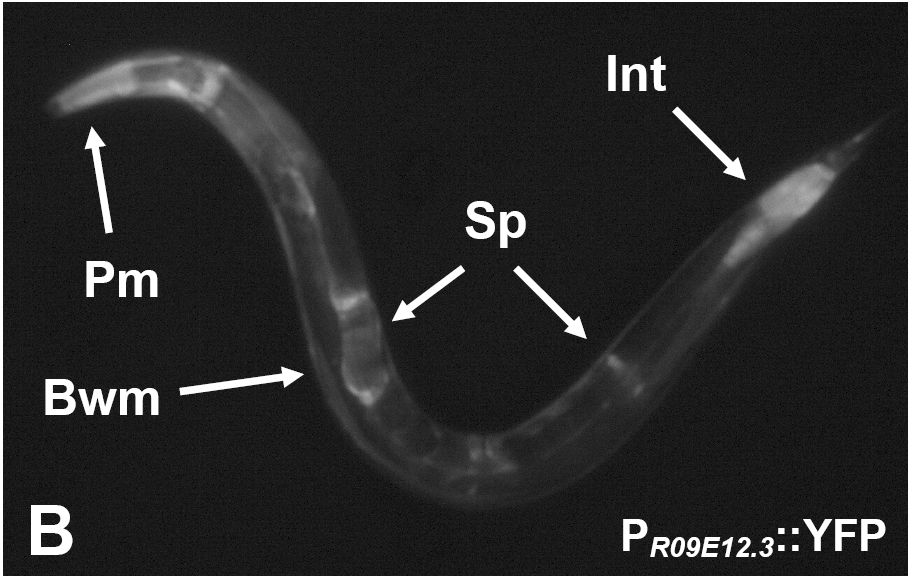NHRs and Their Dependence on Chaperones
Nuclear hormone receptors, in particular steroid receptors are dependent on Hsp90, its cofactors and other chaperones. The interaction with other receptor types is far less clear. There are 400 such receptors in nematodes and about 500 in humans, many of which are uncharacterized.
The molecular chaperones Hsc70 and Hsp90 play an important role during the regulation of nuclear hormone receptors in mammals and likely in C.elegans. We have characterized large parts of the nematode Hsp90 and Hsc70 systems and aim at understanding the contribution of these chaperones to the function of NHRs in nematodes. This also may involve the chaperone Hsc70, which binds NHRs at an early maturation state. Hsc70 itself is an ATPase, which is regulated by nucleotide exchange factors and other partner proteins.

Hsc70 ATPase cycle and regulation of the conformation by the cofactors DNJ-13 and BAG-1
Like Hsp90 and Hsc70 also STI-1 plays a important role during the development of the nematode
Caenorhabditis elegans. STI-1 forms protein complexes with Hsp90 and Hsc70 and is under certain conditions required for gonad development. The protein is, like Hsp90 and Hsc70 ubiquitously expressed and involved in the maturation process of steroid receptors.

Expression of the STI-1 protein in Caenorhabditis elegans